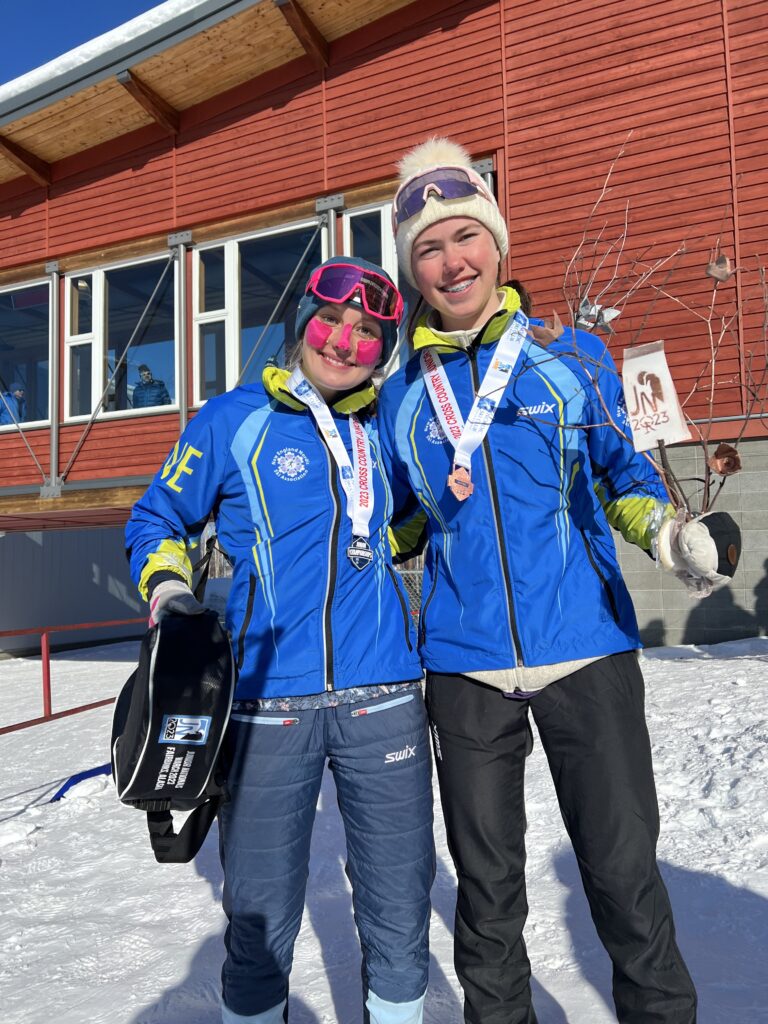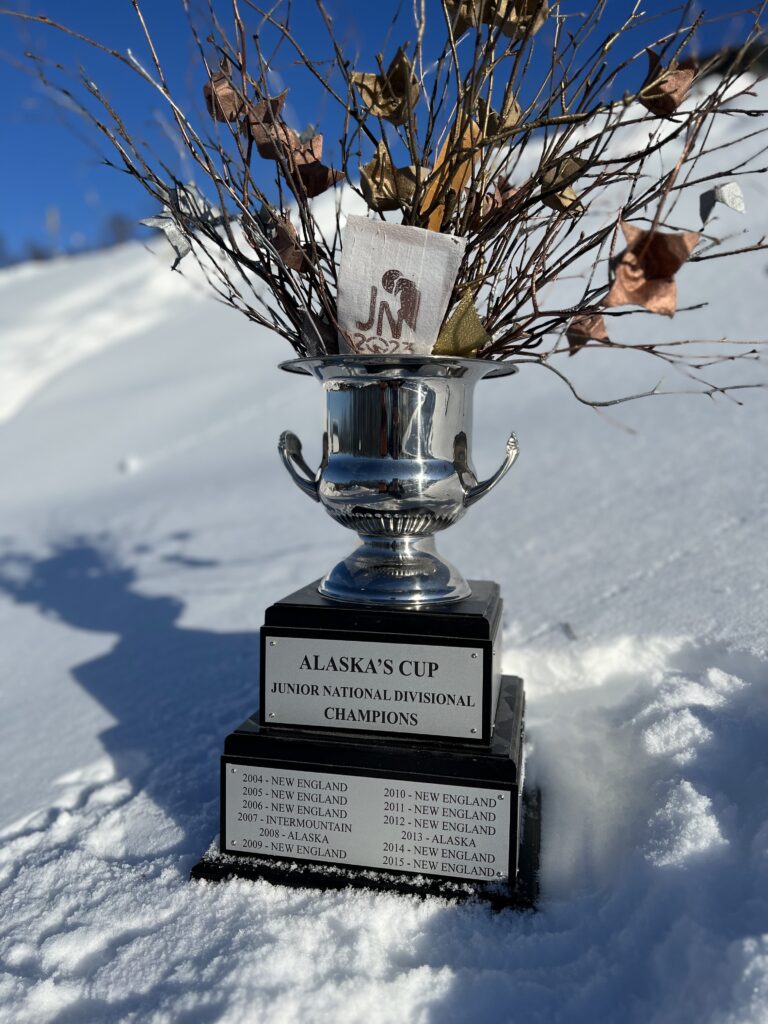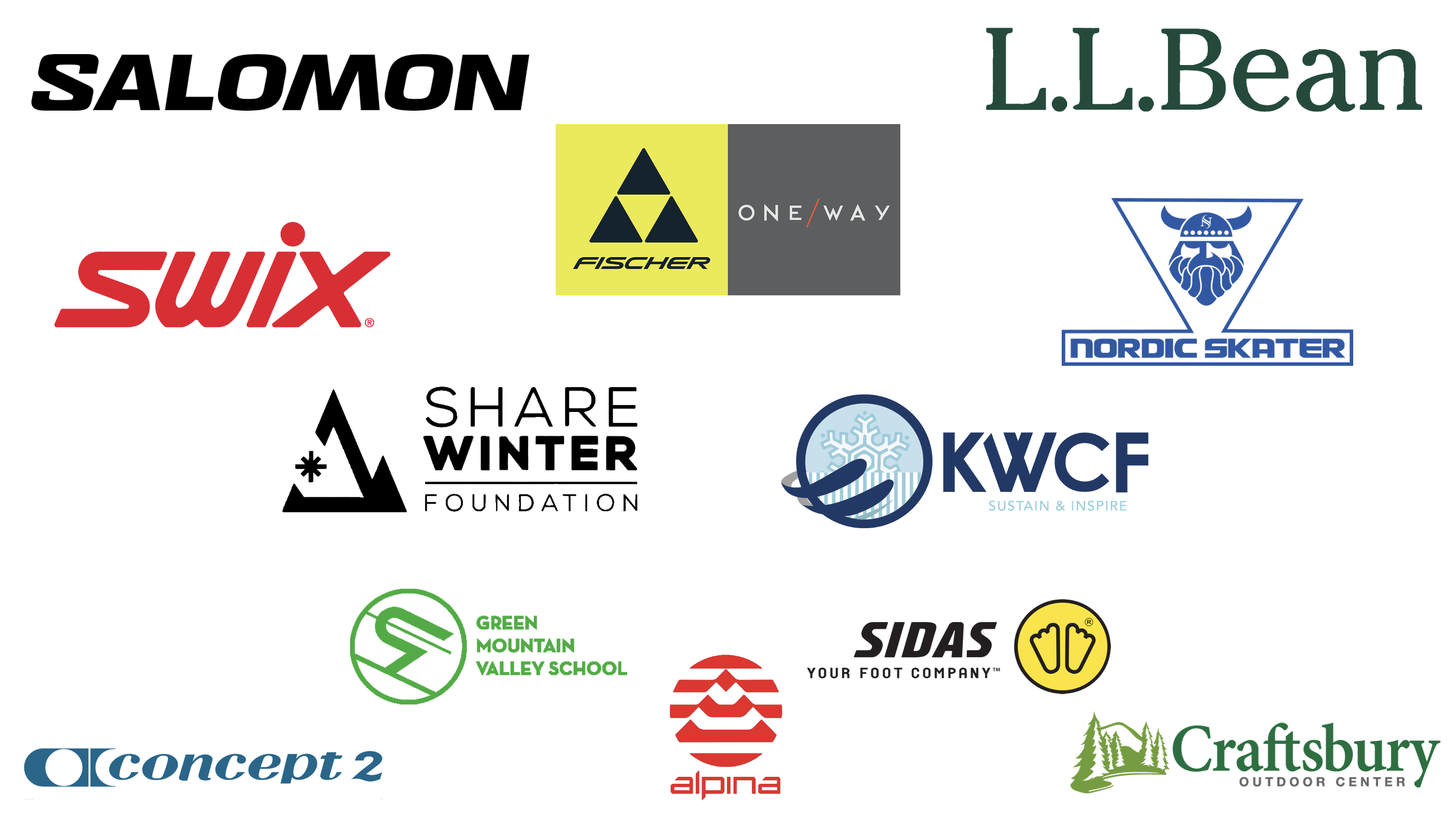The 2023 Junior National Championships highlighted the beauty of Northern Winter and the legacy of John Estle. The single-digit-race-temperatures were invigorating and challenging for Team New England. While precipitation and temperatures have been on the rise in Fairbanks, the cold-dry-and-if-not-perfect trails at Birch Hill are quite unique to the modern Eastern skier.
After months of planning, New England executed seemingly seamless travel to Alaska — with an awesome team dynamic among athletes and staff alike. Our 49 athletes were treated to a world class event, complete with a spectacular Northern Lights display, and exposure to a venue and organizing committee that any cross country skier should be lucky enough to experience. While New England continues to have a good run as a division — this year’s Championships illustrated the #skilikeanamerican movement— with outstanding skiing from all regions. In the end…we brought back the Cup!
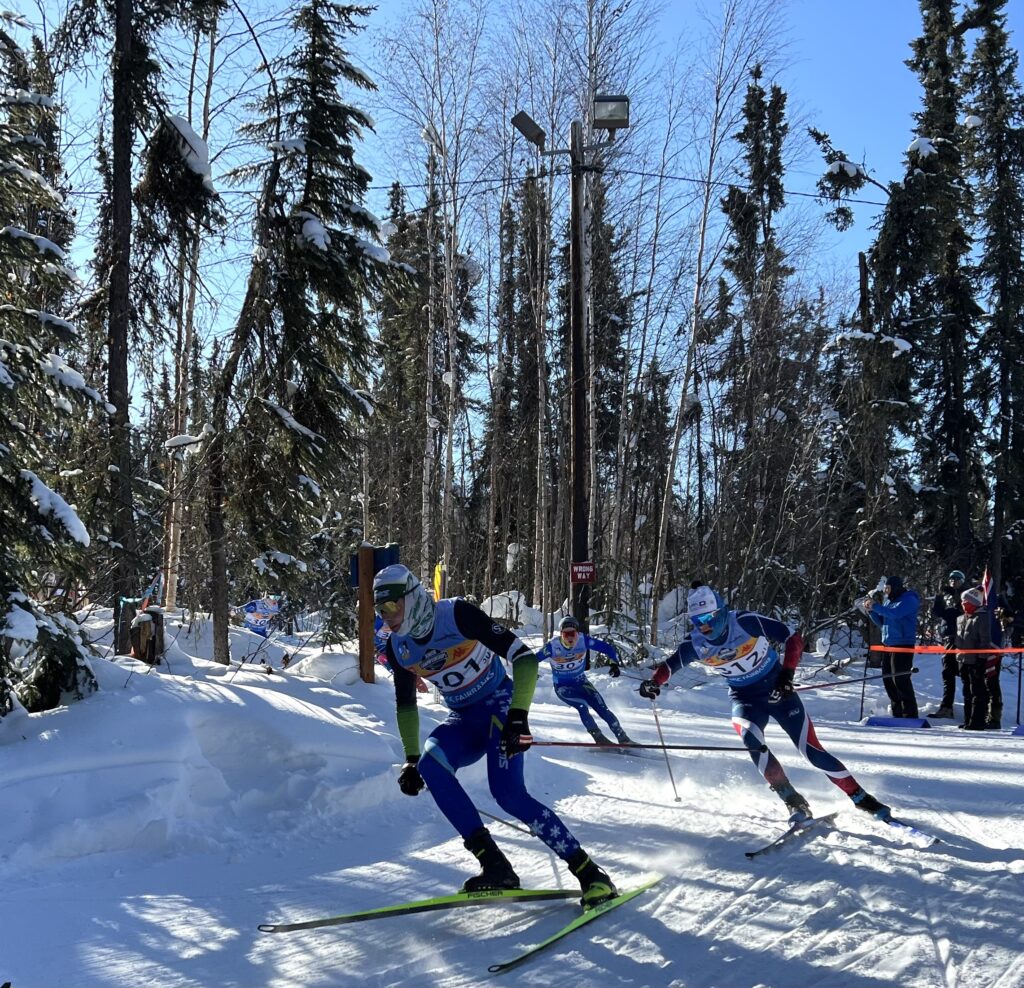
While we had many outstanding individual results that helped us claim the title (37 All American over three races) — it truly was a TEAM effort and a reflection of the strength of our clubs across New England. It was quite clear when the entire team arrived three hours before our departure that the group was organized and all in. Many athletes and coaches were putting masks on for the first time in quite some time and all were happy to do so — some even took Matt Boobar’s advice and dressed for success with shirts and slacks!
Unlike typical trips where coaches and athletes find their own way to team accommodations — this team effort truly began at the point of check in. Almost all of our athletes and the majority of staff were together supporting each other and having a lot of fun in the process. Health compliance and camaraderie continued throughout the week in team meetings, all the way through return travel. We are all thankful for the parents and coaches who helped facilitate travel, and the ambassador parents on the ground who supported the Wax Staff with pizza, coffee and more (and many kids).
On Monday it was apparent that racing on dry snow in single digits is much different than the East Coast. We also learned that there were several divisions that had depth in their rosters and were more accustomed to this condition — namely Intermountain and the Midwest. After the race, in our team and age group meetings, we discussed cold weather strategies, including wearing more layers, keeping heavier clothing on until very close to start and covering exposed skin with Face Tape. By the sprint race we seemed more comfortable on the snow despite a solid north wind — while we still didn’t win the day — our second place showing (to Alaska) gave us much needed points towards the overall lead. On the final day of racing, the mass start freestyle, the athletes could see their competition and chase after results. It was heartening to hear after the races that some athletes not only had individual goals, but also the goal of placing in the top-20 to score Alaska Cup points for the Team!
Another factor in the Alaska Cup statistic is that New England brings a slightly smaller team than many of the other “major” divisions — we typically carry around 50 athletes with a maximum of six U16’s per gender. The teams we were contending with had 60 plus athletes and more U16’s — allowing for more opportunities for top performances. As mentioned above the conditions in Fairbanks are perhaps the most difficult for us as we rarely train or compete on snow like that, we also had the longest travel. Having been on the staff of the 2013 trip to Fairbanks, when the Cup slipped away for a year to Alaska, it was all the more impressive to see this group keep their head down, and although by small margin — win convincingly.
We all owe a huge thanks to the coaches, who took time from their schedules and helped the athletes pursue excellence with the same enthusiasm as the kids!
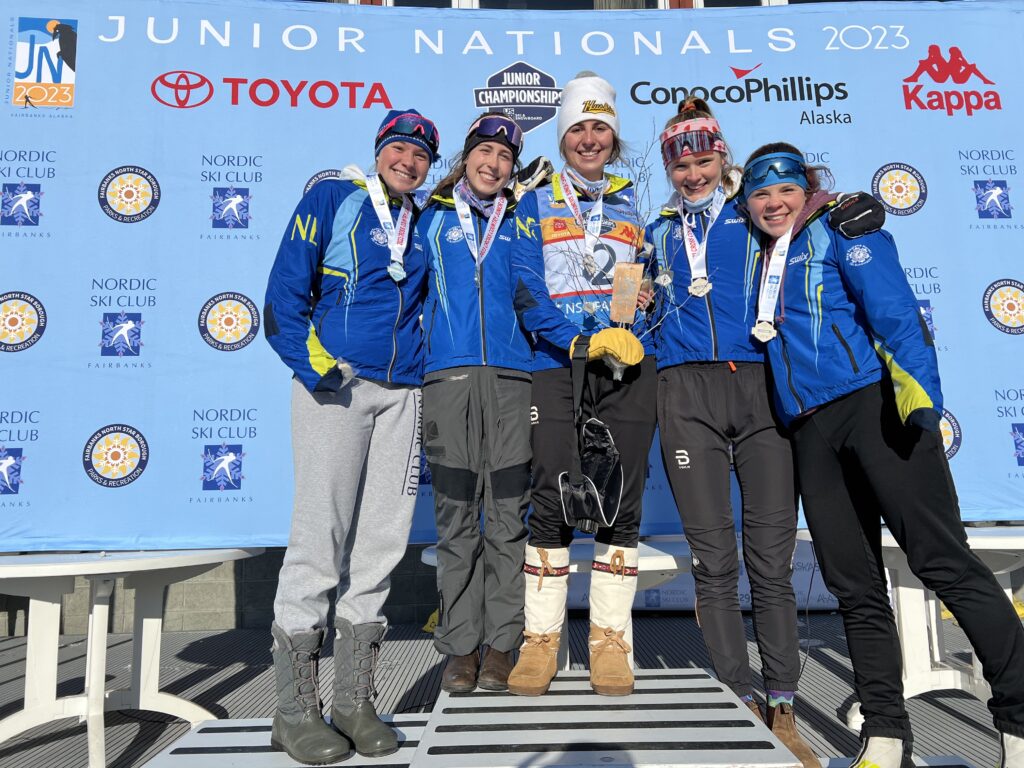
2023 JN Event Website
Results
Rankings
Awesome Photos
NENSA Instagram

